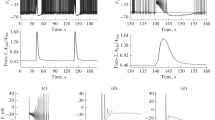Abstract
The role of L-, N- and P-type voltage-dependent calcium channels (VDCCs) in the release of adenosine from rat hippocampal slices was investigated by evaluating the effect of the L-channel activator 1,4-dihydro-2,6-dimethyl-5-nitro-4-[2-(trifluoromethyl)-phenyl]-3-pyridine carboxylic acid methyl ester (Bay K 8644) and of three calcium channel antagonists: the L-channel antagonist nifedipine, the N-channel blocker ω-conotoxin GVIA (ω-CgTx) and the P-channel blocker ω-agatoxin IVA (ω-Aga-IVA).
Adenosine and inosine release, evoked by 5 min electrical stimulation at 10 Hz of hippocampal slices, was assayed by HPLC with ultraviolet absorbance or fluorimetric detection. Nifedipine (100 nM) did not affect adenosine and inosine release evoked by electrical stimulation. Bay K 8644 (100 nM) brought about a statistically significant increase in adenosine evoked release (70%). At a higher concentration (1 μM) Bay K 8644 had no significant effect either on adenosine or inosine release evoked by electrical stimulation. The increase in adenosine release elicited by 100 nM Bay K 8644 was abolished by nifedipine (100 nM). Both ω-CgTx (10 μM) and ω-Aga-IVA (200 nM) caused a statistically significant reduction (77–78%) in evoked release of adenosine. When the previously demonstrated glutamate-dependent component of the release of adenosine was suppressed in the presence of the NMDA and non-NMDA receptor antagonists, D(–)-2-amino-7-phosphonoheptanoic acid (D-AP7, 100 μM) and 6,7-dinitroquinoxaline-2,3-dione (DNQX, 10 μM), the remaining release of adenosine was again significantly reduced by ω-CgTx (10 μM) (60%) and ω-Aga-IVA (200 nM) (73%).
These data suggest that, while L-type VDCCs are involved in the regulation of the evoked release of adenosine only when activated by Bay K 8644, both P- and N-channels play a direct role in the calcium entry involved in the coupling process between electrical stimulation and adenosine release.
Similar content being viewed by others
Author information
Authors and Affiliations
Additional information
Received: 4 September 1996 / Accepted: 8 October 1996
Rights and permissions
About this article
Cite this article
Latini, S., Pedata, F. & Pepeu, G. The contribution of different types of calcium channels to electrically-evoked adenosine release from rat hippocampal slices. Naunyn-Schmiedeberg's Arch Pharmacol 355, 250–255 (1997). https://doi.org/10.1007/PL00004939
Issue Date:
DOI: https://doi.org/10.1007/PL00004939



